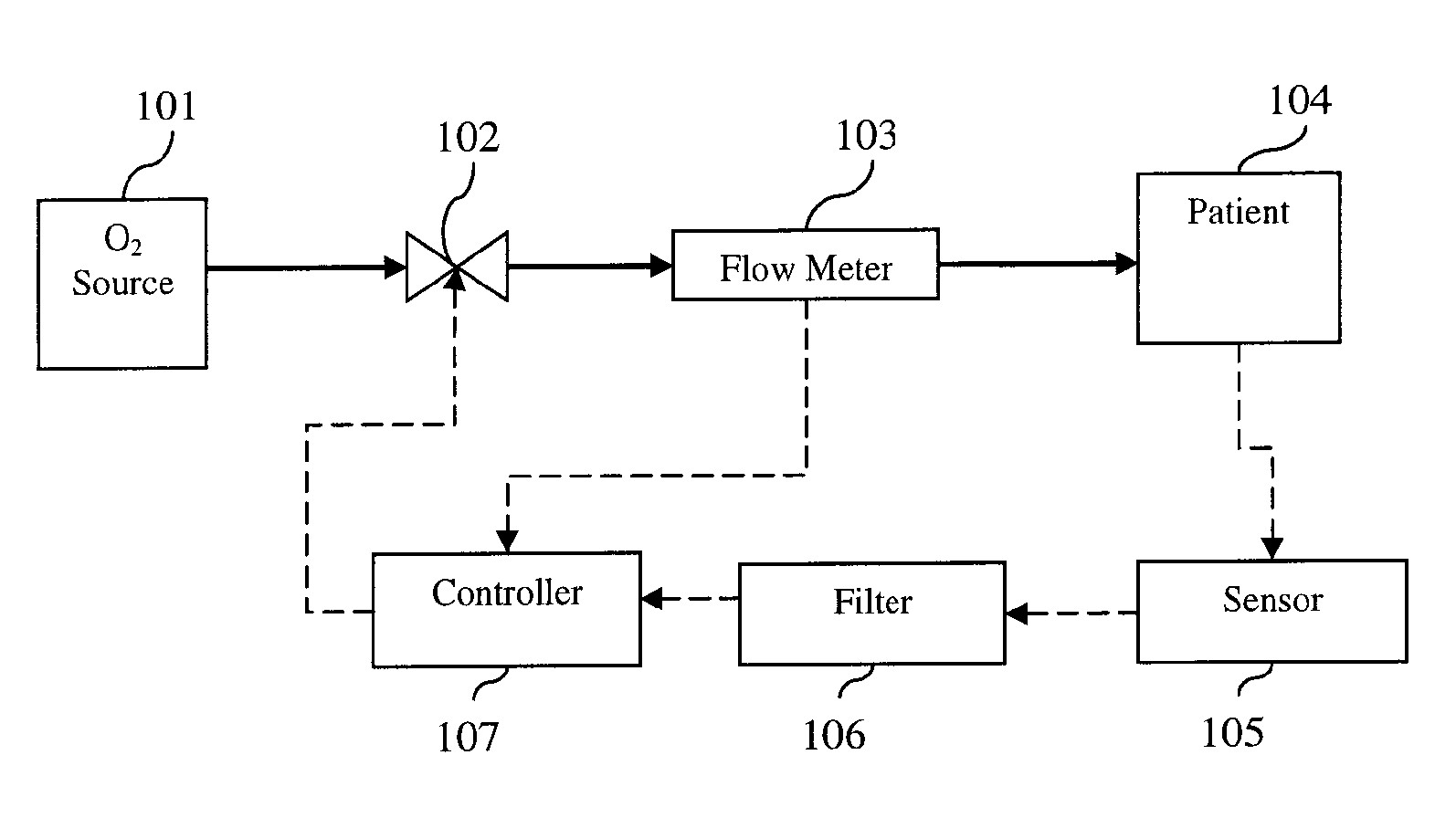Device and method for automatically regulating supplemental oxygen flow-rate
- Summary
- Abstract
- Description
- Claims
- Application Information
AI Technical Summary
Benefits of technology
Problems solved by technology
Method used
Image
Examples
Embodiment Construction
[0039] The present invention provides a device and method for automatically controlling the flow-rate during supplemental oxygen therapy in order to minimize adverse events as described herein and illustrated in the accompanying drawings.
[0040] In the context of the present invention, an ‘adverse event’ is a disturbance in the patient vital physiological measurement away from the predetermined target value. The present invention will adjust the oxygen flow-rate in response to the patient feedback measurement. One embodiment of the present invention provides for using the level of O2 at least in part to automatically control the oxygen flow-rate. Likewise, another embodiment further utilizes transcutaneous CO2 as a patient feedback measure. As mentioned above, supplemental oxygen therapy in patients can lead to a potentially harmful accumulation of CO2. Measures such as heart rate and respiratory rate can also in part signal patient distress. In the present invention, the flow-rate ...
PUM
 Login to View More
Login to View More Abstract
Description
Claims
Application Information
 Login to View More
Login to View More - R&D
- Intellectual Property
- Life Sciences
- Materials
- Tech Scout
- Unparalleled Data Quality
- Higher Quality Content
- 60% Fewer Hallucinations
Browse by: Latest US Patents, China's latest patents, Technical Efficacy Thesaurus, Application Domain, Technology Topic, Popular Technical Reports.
© 2025 PatSnap. All rights reserved.Legal|Privacy policy|Modern Slavery Act Transparency Statement|Sitemap|About US| Contact US: help@patsnap.com



